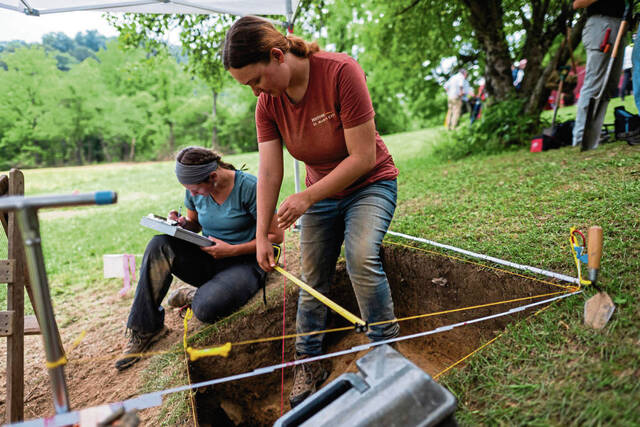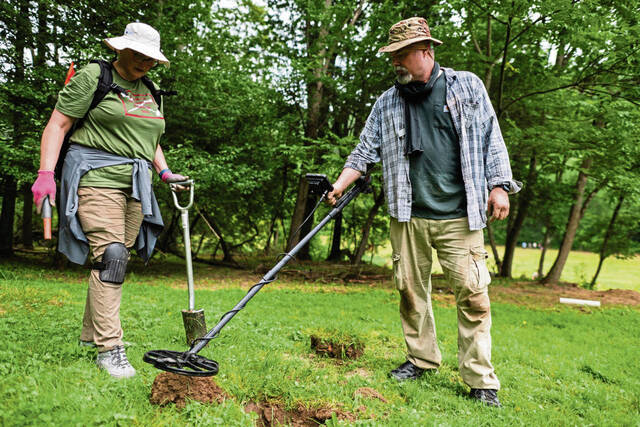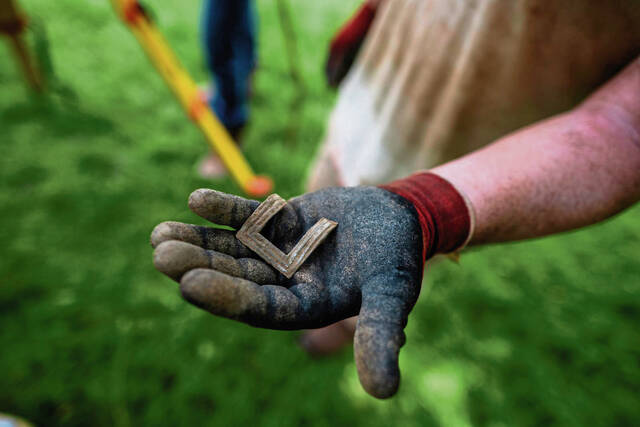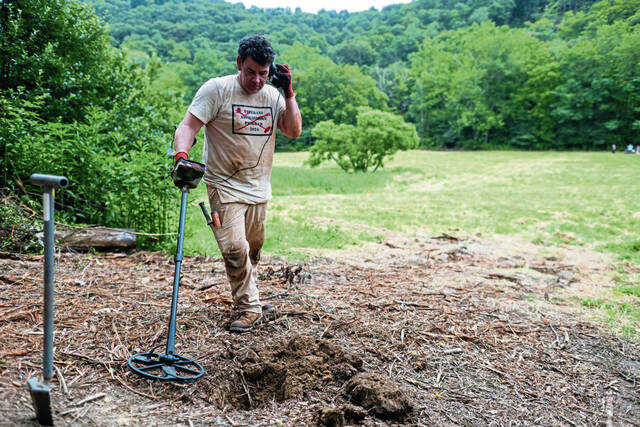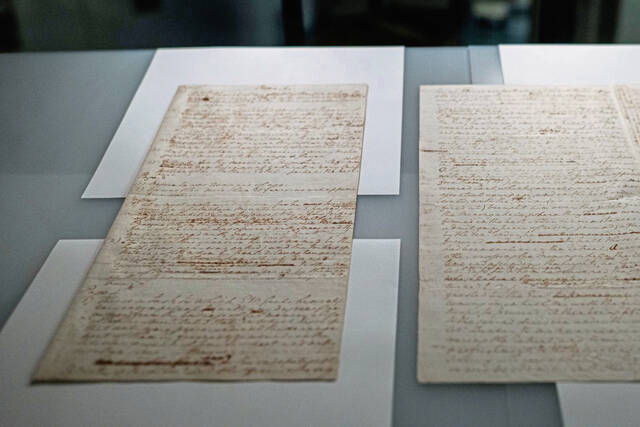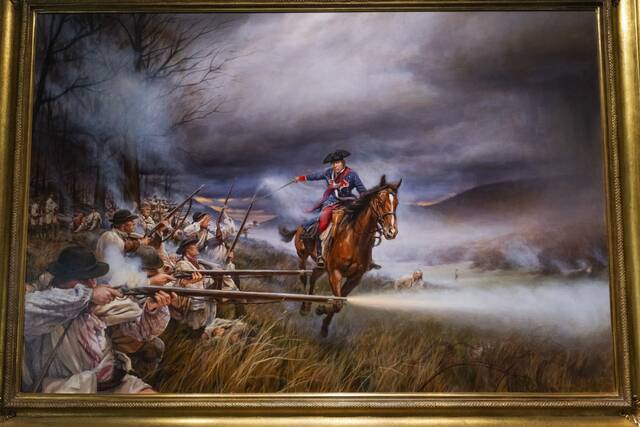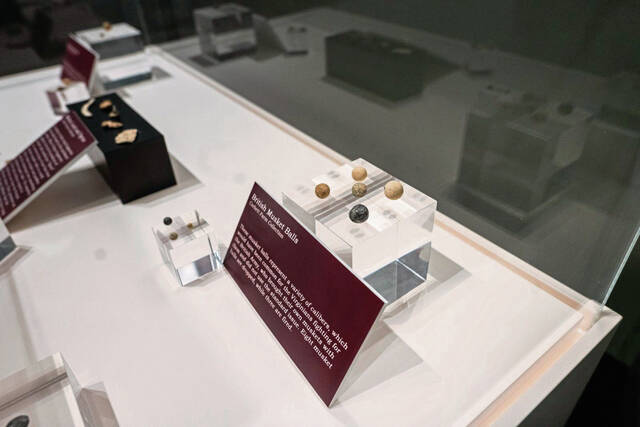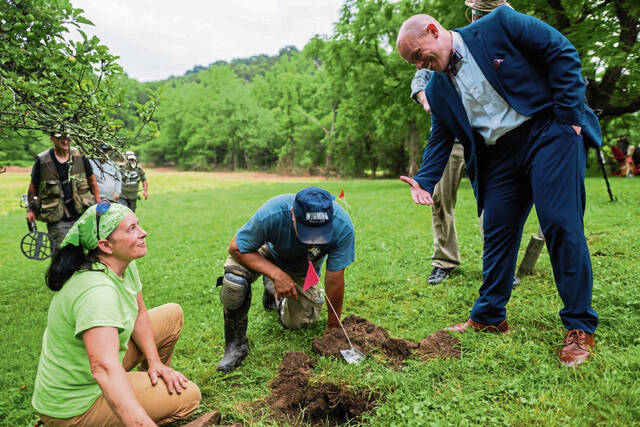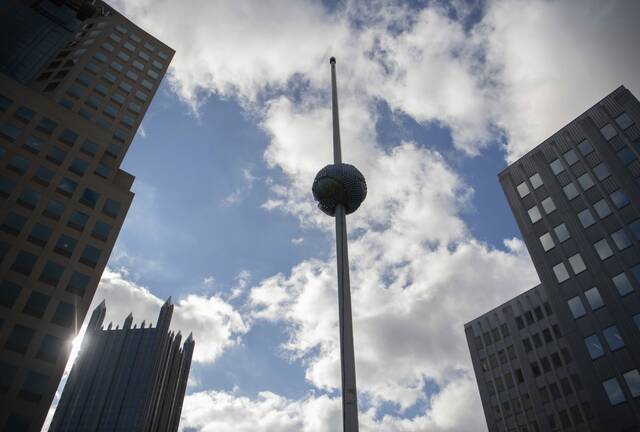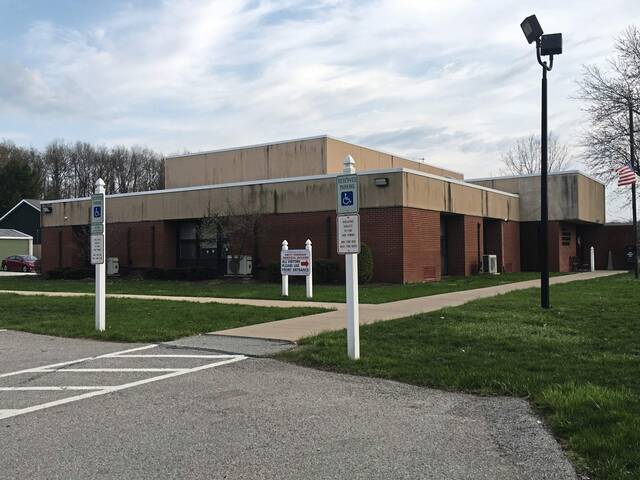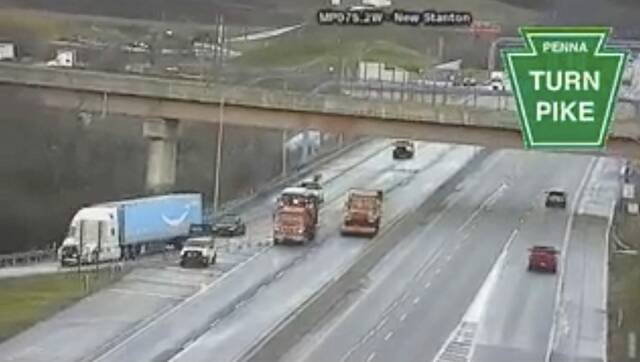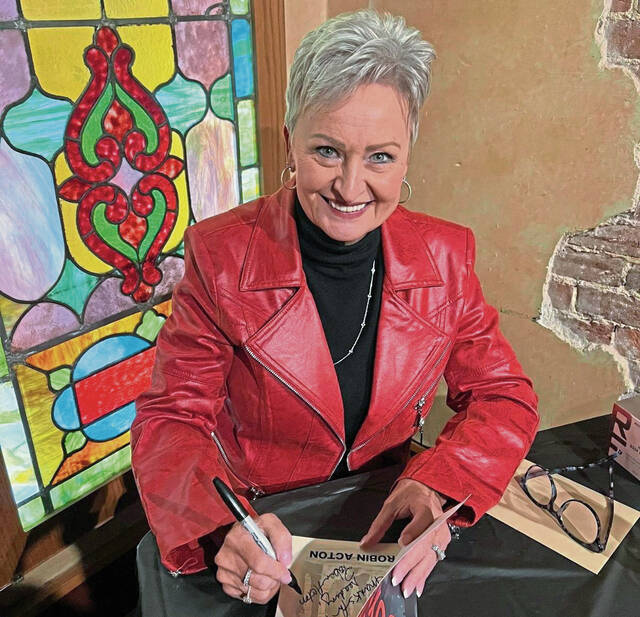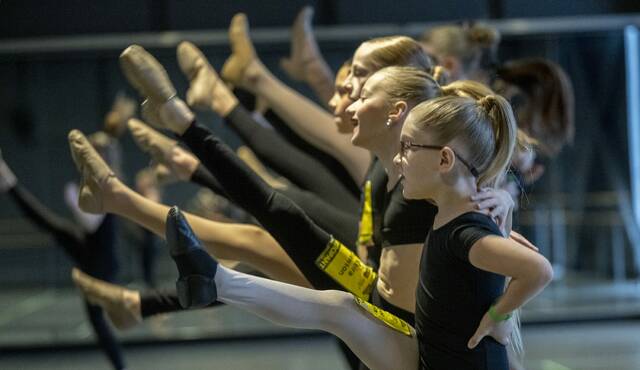Four years of digging for artifacts in the Ligonier area have shed new light on a little-known “friendly fire” incident in George Washington’s military career and have put what turned out to be a pivotal episode in the French and Indian War on firmer ground.
“We found it. I’m confident that we’ve got it,” Juniata College faculty member and archaeological team leader Jonathan Burns announced Friday at the Fort Ligonier Center for History Education.
It is the presumed location of a Nov. 12, 1758, engagement when Col. George Washington, leading Virginian forces from the fort, and a second group of soldiers similarly marching under the British banner mistakenly took shots at each other while separately responding to a French raid near dusk on a foggy day.
Some of the more than 300 items uncovered at the site, including uniform buttons, were unveiled in a new exhibit in the fort museum’s Washington Gallery. Others are being examined at the college, while yet more were being unearthed this week at the site about 2 miles west of the fort.
“This is an extremely significant site,” said Burns, who is director of the Cultural Resource Institute at Juniata. “It’s not every day you get to announce a heretofore undiscovered Washington battlefield.”
“We get to open the pages of history and pull back the veil in a moment and place in George Washington’s life that is often overlooked,” said Matt Gault, Fort Ligonier’s director of education.
Burns said the archaeological work has confirmed the identity of the friendly fire site where some artifacts had been found earlier by individual collectors.
Officials aren’t publicizing the exact location of the private property — along a trace of the old Forbes Road military route to French-held Fort Duquesne, later to be known as Fort Pitt.
Washington is credited with cutting the friendly fire short by moving down the line of soldiers and using his sword to turn aside their muskets.
There was nonetheless a steep cost, with 38 privates and two officers reported dead or missing.
Gault noted there was a silver lining in the incident, as some French stragglers were captured and revealed that their army’s forces at Fort Duquesne were in a weakened position.
That persuaded the British army to immediately advance west — where they claimed victory, discovering the fort had been burned and abandoned by the French.
Three decades after the friendly fire exchange, Washington set down his recollection of the episode in a handwritten document that is part of the Fort Ligonier collection. Writing in the third person, Washington reflected that the incident placed “the life of G.W. in as much jeopardy as it had ever been before or since.”
It’s a moment that was captured in 2019 in the painting “Flash Point” by renowned artist and local native Chas Fagan. That artwork also is on display in the fort museum.
Fagan said an interest in American history, and in the friendly fire incident, was instilled in him by his father, Charlie. Long before the archaeological dig took shape, he said, his father was on a quest to pin down the battle site.
“He was determined to figure it out,” Fagan said.
“The preponderance of buttons, bullets and buckles really tells the story of the battlefield,” Burns said.
He said enough personal items that soldiers might have carried were found far enough away from the Forbes Road that they likely weren’t simply lost by groups traveling on the route. That includes two sock garter buckles.
A particularly interesting artifact that didn’t fit in any of the above categories is a watch key that appears to be of French origin, bearing a fleur-de-lis design.
“We were all giddy that day, for sure,” Burns said of the find.
On Friday, Greg Williams of Washington, D.C., one of a group of veterans who pitch in one week each July to help with the ongoing dig, discovered a copper shoe buckle at the friendly fire site.
“This is pretty cool,” he said.
Spouses and Army veterans Jason and Yvonne Hartman of Ligonier Township are among others who have used metal detectors to find bullets and other small items.
“I did this when I was younger,” said Jason Hartman. “I’m glad to be back in it. We’re big history buffs.”
There’s anticipation when his wife hears the detector sound, suggesting the presence of a metal object.
“You never know what it’s going to be,” she said.
By using isotope analysis, Burns said, archaeologists have been able to sort bullets containing lead mined in Europe, which likely were used by the soldiers from Virginia, from bullets whose lead was mined by the French in Missouri. Just three bullets were found with lead mined in Canada — then also part of New France.
Other means used to discover clues at the friendly fire site include ground-penetrating radar, which revealed the corner of a long-gone 1770s barn, and two archaeological cadaver dogs, who detected scents left behind by 18th-century humans at several spots.
Crews so far have been unable to find definitive traces of graves at the friendly fire site, where those who were killed in the exchange would have been buried.
“It would be very nice to find the burials and memorialize them appropriately,” said Susanne Haney, a former Delmont resident who lives in Indiana County. “That would be the right thing to do.”
Haney, who is a PennDOT archaeologist, took part in this week’s work at the dig site, providing a training experience for three Indiana University of Pennsylvania students who accompanied her as interns.
Ultimately, she said, dig participants are hoping to recover and carefully document enough period artifacts to “map everything out and kind of reconstruct what happened.”
“The site may yield more information that is important to history,” Burns said.
According to Executive Director Mary Manges, the fort has an agreement in place with the property owners that will allow the dig to continue for at least five more years.


